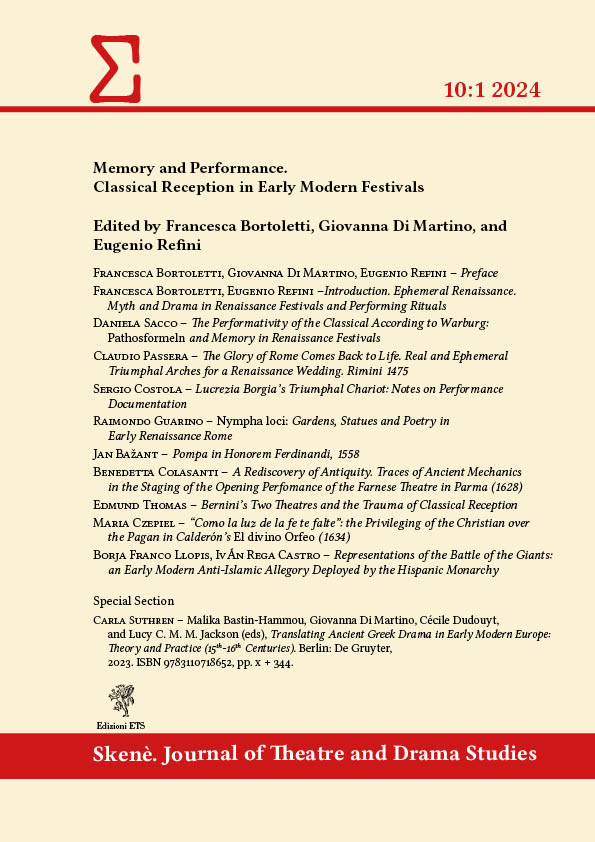Representations of the Battle of the Giants: an Early Modern Anti-Islamic Allegory Deployed by the Hispanic Monarchy
DOI:
https://doi.org/10.13136/7q1xh046Abstract
The focus of the present paper is a prescient political allegory that was used to represent the Iberian monarchs’ fight against Islam: the Battle of the Giants. We explore the propagandistic significance of this allegory through an analysis of its two principal forms: the Gigantomachy and the Titanomachy. Taking the Gigantomachies created by Giulio Romano and Perino del Vaga as our point of departure, this study develops a diachronic approach to reconstructing the genesis, evolution and dissemination of this mythological theme in Italy and the Iberian Peninsula from the early sixteenth to the early eighteenth centuries. Attention is then turned to the incorporation of this allegory into the political discourse of the Hispanic Monarchy from the end of the sixteenth century onwards. Careful scrutiny is paid to invocations of this allegory in the ephemeral decorations created for royal festivals during the early modern period, and it is asked: who gained political capital from these events?
Keywords: Battle of the Giants; Gigantomachy; Titanomachy; ephemeral art; Islamic imagery; Hispanic monarchy; Iberia
Downloads
Published
Issue
Section
License
Copyright (c) 2024 Skenè. Journal of Theatre and Drama Studies

This work is licensed under a Creative Commons Attribution 4.0 International License.
Open Access Policy
This journal provides immediate open access to its content on the principle that making research freely available to the public supports a greater global exchange of knowledge.
This Journal is a CC-BY 4.0 publication (https://creativecommons.org/licenses/by/4.0/). This Licence allows others to share the work with an acknowledgement of the work’s authorship and initial publication in this Journal, providing a link to the Licence and explicitly underlining any change (full mention of Issue number, year, pages and DOI is required).
- The Author retains (i) the rights to reproduce, to distribute, to publicly perform, and to publicly display the Article in any medium for any purpose; (ii) the right to prepare derivative works from the Article; and (iii) the right to authorise others to make any use of the Article so long as the Author receives credit as Author and the Journal in which the Article has been published are cited as the source of first publication of the Article. For example, the Author may make and distribute copies in the course of teaching and research and may post the Article on personal or institutional Web sites and in other open-access digital repositories.
- The Author is free to enter into separate, additional contractual arrangements for the non-exclusive distribution of the Journal’s published version of the work, with an acknowledgement of its initial publication in this Journal and explicitly underlining any change (full mention of Issue number, year, pages and DOI is required).
- The Author is permitted and encouraged to post their work online after the evaluation process has been successfully passed, as it can lead to productive exchanges as well as to a wider dissemination of the published work.

